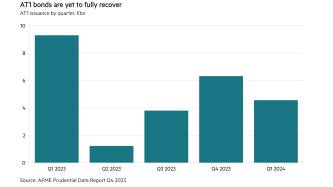‘‘Never in history have interest rates stayed so low. Because of this we have to change our model.” Things are moving for Jose Valino, CIO at Spanish savings bank Caixa Galicia. Economic factors are forcing the bank to change its business – and the public’s perception of it – from that of a product-focused ‘public sector’ route to a services company. As is often the case, the shift is reliant upon technology and its alignment with business strategy.
Mr Valino’s background as a consultant serves him well in this environment. Bridging the gap between the business and IT side isn’t purely an internal function.
Evaluating the options from third parties is every bit as important. He believes that consultants can play a valuable role in assisting a business, while his knowledge of their trade allows him to examine other options when searching for solutions.
Controlled outsourcing
“I follow the Jamie Dimon approach [president and COO of JPMorgan Chase involved in cancelling a $5bn outsourcing deal with IBM]. With only 160 people under me I outsource a lot of work but I want to have control. I don’t want the Accentures and IBMs of the world coming in and making decisions for the whole company. I use consultants, but for selected issues, rather than for making poorly founded decisions on technology alone.”
His former career allows him to be fully aware of the costs, pricing models and strategies employed by services providers. In order to get around extraneous charges, he looks for external allies who can share technical knowledge and experience, namely other banks. “This is a new business paradigm. When using technology, co-operation is the key. In Spain we leverage the cooperation among savings institutions using our cooperation organisation called COAS, where we look at the best way to afford these projects, such as sharing experience or common design. We should [co-operate] instead of bringing outsourcers and consultants in,” he says.
An example of this is found in his presidency of the Architectural Committee of (Service Institutions) in Spain. The committee is currently addressing the concept of service-oriented architecture (SOA), “to analyse what is real and what is not”.
Although the technologies being used at Caixa Galicia are third-party systems, Mr Valino sees the development of the overall system as a problem to be shared. “We have small pieces of SOA. We have a number of brand new developments with interconnection between IBM and Microsoft products using SOA concepts, but we need investment. In order to develop SOA, we are working with other institutions that have the same problem. I don’t consider this a problem that should be addressed alone by institutions such as ours.”
Cheaper alternative
The development is needed if the bank is to ensure IT costs do not rise exponentially. Adding functionality to a mainframe is okay for a larger bank, but the costs involved can be prohibitive for smaller finance houses.
One alternative is to rip out the legacy systems and purchase newer technology. The other is to implement a service-oriented architecture and add lower cost functionality to the older systems, as Mr Valino explains. “Organisations like mine, we have strong operational capabilities, we are not expensive to run, we are very efficient and it is much cheaper to create a good SOA than it is to replace systems.”
The bank still has its own system for domestic core banking in Spain although it has purchased the Flexcube system from i-flex for its international operations.
Mind the gap
When making decisions on technology usage, Mr Valino is keen to ensure that projects are well planned and adhered to. For this reason IT personnel are involved in planning the qualitative performance goals for a project and have authority to overrule any unplanned changes. He has found the greatest problem in this area is actually getting new systems used by those in the business – a task that is common across the industry.
“Colleagues in other organisations tell me that they spend a lot of money on systems which then aren’t used,” he notes. To get around this he takes the view that the bank must move people across the gap in understanding so that they can communicate or, should there be a failure in communication, cope with missing information.
“The solution is to bring business people into IT and IT people into business. The business people must be able to accurately translate what they want and define requirements for the IT side. The systems people must be able to cope with incomplete design.”
Long-term advantage
All banks must cope with these dilemmas. However, when determining strategy, Mr Valino believes the bank has an advantage over publicly owned rivals. “The savings banks have some advantage because we don’t have shareholder votes and we are not on the markets. A lot of my friends who run IT in other banks are looking at the short term – they are not thinking in the medium to long term. They can’t afford to do that.”
One such project is the deployment of an internet protocol network that BT and Cisco are currently working on with the bank. “My goal is to be able to deploy high-value applications across this network in two years or more.”
New model
The central use of technology is geared around the change in the bank’s business model. To develop as a retail-focused organisation, the bank has to alter the way in which it is used by the public.
“There is a change in attitude in Spanish banks. We want to charge our clients a fee for the services that we provide. That would make us service companies rather than product companies. The perception of banking in Spain is that it is like the public sector. We have to fight against such a mindset. I firmly believe that we must move toward retail.”
One way in which the bank has pushed this is with the introduction of a virtual banking office called ‘Centro On’. This is a branch concept that has opened up online banking in the high street to allow those customers unfamiliar with newer technologies to become competent in their use, while being made aware of new online products.
Not all of the challenges to overcome were technical – opening in the morning and the evening (where branches have traditionally only been open in the morning) meant the bank had to negotiate with the unions to get approval. As an advantage, the bank was able to utilise a lot of newer technologies such as ATMs for instant credit and deposit and in-branch marketing. The project has already begun bearing fruit.
“A lot of online brokerage is oriented through the client relationship we have through the branch. We provide meetings for SMEs with experts. We have created a café-style atmosphere for clients.” For Mr Valino, that is truly a shift in perceptions.











